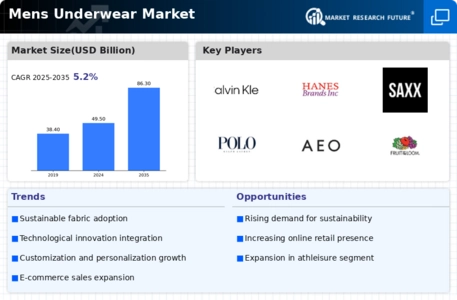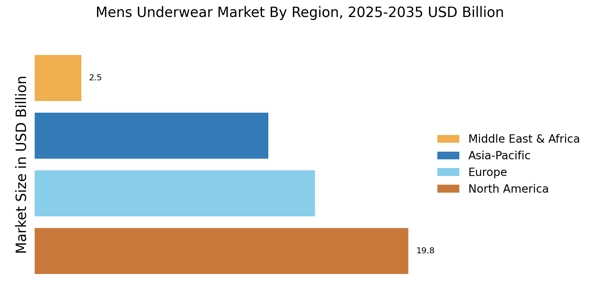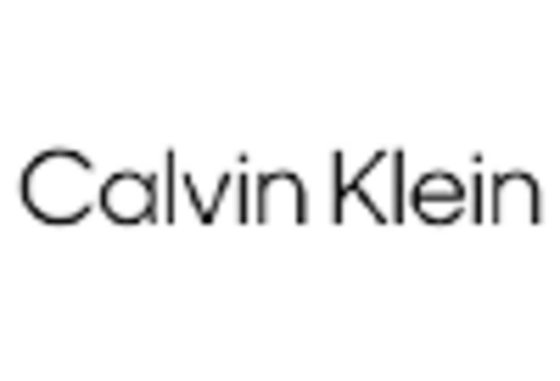Growth of Subscription Services
The Mens Underwear Market is experiencing a surge in subscription services that offer convenience and personalization. Consumers are increasingly drawn to the idea of receiving curated underwear selections delivered to their doorstep on a regular basis. This model not only simplifies the shopping experience but also allows brands to build customer loyalty through tailored offerings. Market data suggests that subscription-based models are gaining traction, with some companies reporting a growth rate of over 20% in their subscription services. This trend indicates a shift in consumer purchasing behavior, where convenience and personalization are becoming paramount, thus presenting a lucrative opportunity for brands to innovate in their service offerings.
Shift Towards Health and Wellness
The Mens Underwear Market is increasingly influenced by the broader health and wellness trend. Consumers are becoming more conscious of their overall well-being, which extends to their choice of underwear. There is a growing preference for products that promote health benefits, such as antimicrobial properties and ergonomic designs that support body movement. This shift is reflected in the rising sales of underwear that incorporates features aimed at enhancing comfort and reducing skin irritation. Market data indicates that mens underwear brands focusing on health-oriented features are experiencing higher sales growth compared to traditional offerings. This trend suggests that brands that align their products with health and wellness principles may capture a larger share of the market.
Influence of Celebrity Endorsements
The Mens Underwear Market is significantly impacted by celebrity endorsements and influencer marketing. High-profile figures in sports and entertainment are increasingly promoting specific brands, which enhances visibility and desirability among consumers. This trend appears to be particularly effective among younger demographics, who are more likely to purchase products endorsed by their favorite celebrities. The association with well-known personalities not only boosts brand recognition but also creates a perception of quality and style. Market analysis indicates that brands leveraging celebrity endorsements often see a spike in sales, suggesting that this marketing strategy is a powerful driver in the competitive mens underwear landscape.
Increasing Demand for Innovative Fabrics
The Mens Underwear Market is witnessing a notable shift towards innovative fabrics that enhance comfort and performance. Consumers increasingly prefer materials that offer moisture-wicking properties, breathability, and stretchability. This trend is driven by a growing awareness of the benefits of advanced textiles, such as modal and bamboo fibers, which provide superior comfort compared to traditional cotton. As a result, brands are investing in research and development to create underwear that meets these evolving consumer preferences. The market for performance-oriented mens underwear is projected to grow significantly, with estimates suggesting a compound annual growth rate of around 5% over the next few years. This indicates a robust opportunity for manufacturers to capitalize on the demand for high-quality, functional underwear that caters to active lifestyles.
Rising Awareness of Sustainable Practices
The Mens Underwear Market is witnessing a growing emphasis on sustainability, as consumers become more aware of environmental issues. Brands that adopt eco-friendly practices, such as using organic materials and sustainable manufacturing processes, are increasingly favored by consumers. This trend is reflected in market data, which shows that sales of sustainable mens underwear have risen by approximately 15% in recent years. As consumers seek to make more responsible purchasing decisions, brands that prioritize sustainability are likely to gain a competitive edge. This shift not only aligns with consumer values but also encourages innovation in product development, as companies explore new ways to reduce their environmental footprint.


















Leave a Comment